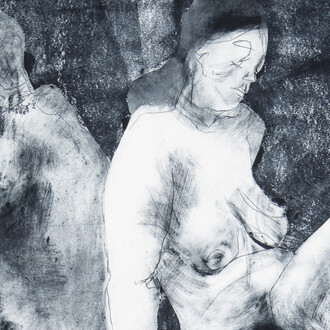Letters home is a new body of charcoal drawings and abstracted patterns that reference Wiradjuri and Kamilaori scar trees, by Sam Harrison. The work explores the loss of language that is necessary to communicate something that is internally and intimately understood. The patterns in these works are used to demarcate use of land and ultimately function as a written language, questioning if colonial languages hold within them the capacity to express experiences so far removed from colonial belief systems. It reflects on how the structure of language embodies the moral and philosophical beliefs of the culture it comes from. How do the words we chose to make, reflect who we are? Referencing Wiradjuri and Kamilaori scar trees,
The abstracted text overlaying the charcoal drawings holds within it a desire to write home, to send updates of life to grandparents, to ask for updates on trivially important politics and if the siblings are stepping up in their new jobs. It is an imagined nostalgia for a mundane life steeped in the lived experience of our cultural values. How much do you change a person when you steal a word from them?
Essay writer Georgia Boe states, “Sam Harrison describes this as the least political work he has made to date. He does not write letters or like to write. Alas, charcoal; the mark humans made, cave walls and rock art in Nawarla Gabarnmang (Northern Territory) or Lascaux (France), hands pressed in ash, stories told with language. Each painting is an act of a letter. The urge to share what may have happened to oneself. These works refer to distance and return, the tension between present separation, idealised past and an uncertain future1. These works by Harrison are not letters in themselves, but the idea of them haunts them: to share and to connect after an event. They attempt to connect where connection was once severed or never fully formed: growing up across Countries, without the proximity of extended family, with the knowledge that “home” is a word charged with complexity.”
















